Why it’s so good for you
Walking with Nature
In the classroom, it has taken me many years to develop and adopt what I believe to be effective strategies to teach writing. One of these strategies is called Writing Circles.
One afternoon, I was sitting with a small group of passionate upper elementary writers in what we call a Writing Circle. On this particular fall day, we were exploring Imagery. Imagery is a literary device employing words and phrases that tickle our five physical senses (sight, sound, smell, taste, touch).
The example I shared with the class was, “The fresh, juicy orange is very cold and sweet.” As a group, students came up with a few more sentences using imagery. I could tell they were excited to practice more. Together, we all agreed to choose a personal experience to write about using imagery.
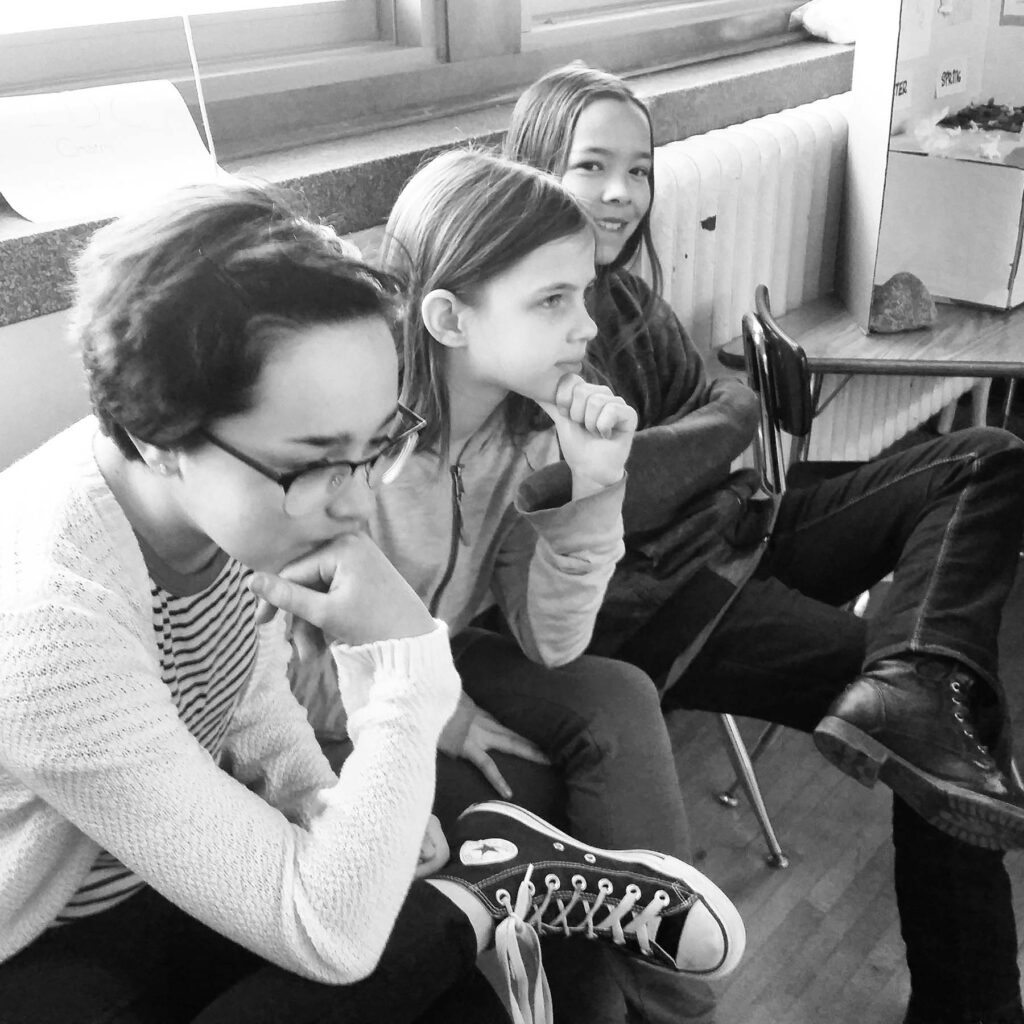
We agreed to come back together in a few days and those brave enough would share part or all of their writing with the group. Often, I completed the writing assignments our writing groups would come up with during writing circles. Students tend to be shy, even insecure, when sharing their writing. I would often volunteer to read mine first to help put them more at ease. To be honest, this wasn’t always easy for me either!
Spending Time with Nature
I thought back to a fall evening just a few days before. After a difficult day of teaching, I headed out after school to spend some time within nature. When I read this response, even now, I can still feel what it was like to hike along this trail:
The muted sky shines pink across the crystal water’s blue. Water so clear it acts as a mirror, reflecting an image of the downtown buildings nestled in sunlight. An unyielding wind whistles through the trees, rustles and shakes the leaves. Some leaves break free from their branches. They slowly float down, down to the asphalt. The brittle wind feels like pinpricks against my cheeks. Reminds me winter draws near. A slight scent of mildew and moldering matter is carried along the air, delivering the aroma to me. My mouth is dry. Only a hint of salty perspiration is the taste I recognize. My thoughts wonder toward sipping water from the nearest fountain. The sound of a distant train horn leads my thoughts back to the walking trail again. To my right, waves rush steadily in and out as while they softly swoosh against the sandy shore. A dull crunch of orange and brown leaves press underneath my sweaty, worn down tennis shoes. I peer into the skyline once more. The streak of pink is turning to purple, black sky soon will blanket the earth. That blanket feels fuzzy soft and lingers like a gentle hug transferring warmth upon my skin. For the first time today I feel alive; taking a full breath in and filling my lungs with night air. I continue to stride forward. One foot in front of the other. The scrape of my shoes fill my ears with every step. I can feel the weight of my body in my hips each time a leg lands. Again and again. Crunch of orange and brown. The wind whistles. The leaves rustle and shake, some fall to the earth. The sound of a distant train horn. For just a moment, I’m carried by the wind along the dark trail. My rebirth.
Walking and Talking
New research shows walking and talking enhances our mental creativity. Although modern science is only beginning to catch on, this secret was known long ago. Many well-known philosophers are famous for walking while working outdoors. Plato’s school was outside, in a grove of trees called Akadēmía. Socrates was known to stroll and philosophize. Aristotle taught his classes while he walked up and down the walkways of the Lyceum.
The Stoics walked and talked on outdoor porches filled with beautiful artwork. The Roman Stoic Seneca told his followers, “We should take wandering outdoor walks so that the mind might be nourished and refreshed by the open air and deep breathing.”
The brain is always active. Even when standing motionless and doing what we think is nothing, our brain is hard at work. While standing still, billions of neurons in our mind are firing. It therefore stands to reason much more is happening to our bodies and our brains when we walk.
How much of our brains do we actually use?
Neuroscientists are looking more closely at the background noises within our brains. For decades, it was believed this ‘noise’ was nothing more than noise. Clutter in the brain. However, our brain “noise” increases while we walk. This increase is now known as spontaneous cognitive fluctuations. Moreover, it is involved in all brain functioning.
“When we take a walk outside, the fractal rhythms of our heart synchronize with the fractal rhythms of our lungs and our fractal gait. Researchers have also shown that our wandering bodies make our minds wander too. On a walk, our brain waves slow down. The underlying spontaneous fluctuations bubble up more easily, creating experiences of spontaneous thoughts and associations that seem to come from nowhere. We often call them “moments of inspiration.””
Thomas Nail (August, 2021)
Spontaneous fluctuations live in the dark matter of our brains. It uses two-thirds of the brain’s total energy supply. Although they make up the vast majority of brain activity, they continue to be cloaked in mystery.
Some researchers believe healthy cognitive fluctuations were an evolutionary adaptation. They were used by humans to aid in identifying, navigating, and remembering the fractal patterns abundant in nature. Fractal patterns are easy on the eyes, fascinating to see and to hear and inspire feelings of beauty.
Walking just 20 minutes a day can make a big difference!
Put simply, walking with nature makes us feel good. It releases endorphins which lowers our risk of depression. Walking with nature also increases cognitive functioning and strengthens our memory. On a biological level, walking with nature produces a protein essential for neuronal development, cognitive function and survival.
Walking is a simple way to improve or maintain overall health. Just by walking 20 to 30 minutes a day can increase cardiovascular fitness, strengthen bones and boost muscle strength and endurance. Unlike many other forms of exercise, walking is free. It doesn’t require any special equipment, membership or training. Even more, walking can be done at any time of day and can be at your own pace.
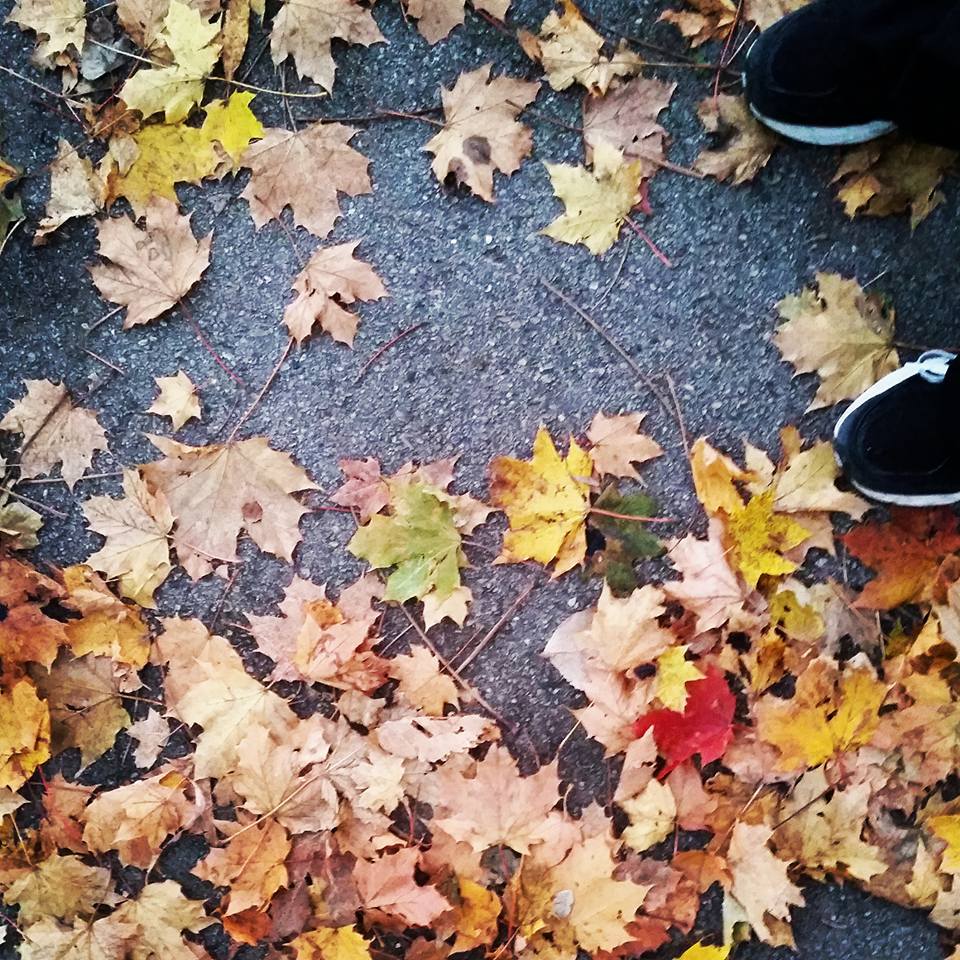
The primary source of walking’s cognitive benefits seems to come from its effects on the mysterious spontaneous fluctuations of our brains. Reason is not the source of intelligence. Instead, it’s the product of it.
When we take a walk outside, the fractal rhythms of our heart synchronize with the fractal rhythms of our lungs and our fractal gait. Researchers have also shown that our wandering bodies make our minds wander too.
On a walk, our brain waves slow down. The spontaneous fluctuations bubble up more easily, creating experiences of spontaneous thoughts.
These associations seemingly come from nowhere. Some might refer to these thoughts as moments of clarity or inspiration.
Recent studies on walking also show that walking with other people synchronizes their brain and bodily rhythms. This results in increased empathy, cooperation and sharing. It stands to reason, walking benefits everyone’s social and emotional education.
What is a Nature Walk?
Nature walks offer opportunities for connecting language, science, history and math to classroom lessons. It also allows time for unstructured play and free exploration. In addition to practicing grace and courtesy, students spend time observing their surroundings. They are encouraged to explore the organic materials within their environment.
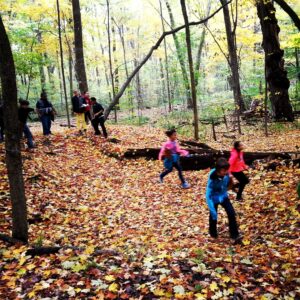
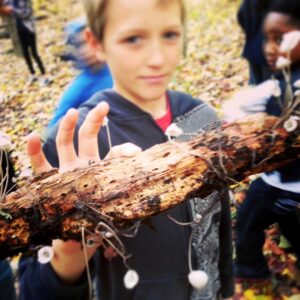
Walking with nature has always been an obvious way for me to connect botany work to our natural surroundings. At my previous school where I taught in the upper elementary, we were very lucky to be located only a few blocks away from Lake Michigan. To the south is a beautiful and historical wooded area named the Seminary Woods.
My favorite botany adventure connects to the Function and Classification of the Leaf. In the classroom, I give a few initial lessons on leaves and show students some different examples from field guides and from leaves I’ve collected.
Afterwards, we continue our investigation of leaves by heading to the woods. Students then collect their own leaf samples. The history of the Seminary Woods and its surroundings is rich with stories to be shared along the walk! Botany Nomenclature is an easy way to link language study to the work as well.
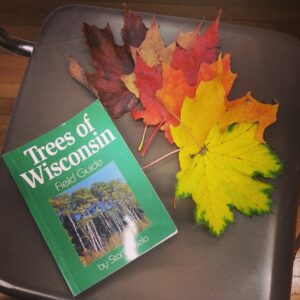
Of course, it is best practice to review walking expectations before heading out. Walking respectfully in a line of 30 students can take some practice! I always remind the students to stay as quiet as they can in residential areas, stay off of other people’s grass and to respect nature. Poking your brother with a stick is very different than poking your friends in a big group on a nature walk.
The best part? The cost is free. The possibilities are endless!
What the Heck is a Writing Circle, anyway?
I attended a writing workshop about a decade ago on Writing Circles. The workshop was facilitated by Jim Vopat, who at the time was teaching at Carroll University, Waukesha. Given Carroll University is my undergraduate alma mater (back in the 90s, it went by the name of Carroll College), this was a fun coincidence.
A Writing Circle brings writers at different ability levels and with different interests together in one place. Individuals are then encouraged to discuss their writing in a workshop style setting. Students are taught to write ‘on demand,’ give valuable feedback, and hear suggestions from fellow classmates. It can build community in a classroom, and help students develop public speaking skills and gain experience in publishing. This workshop method could be used for any genre of writing (creative prose, poetry, etc.).
Writing Circles, in my experience and opinion, are a transformation in writing workshop. For me, it is the missing link between independent student writing and whole-group instruction.
Writing Circles give students the space, safety, and support they need to become more confident and creative writers. As a Montessori Guide, it too lends well to our Montessori curriculum. It encourages collaboration while at the same time allowing for self-direction.
2013
How do you Facilitate a Writing Circle?
Writing Circles can be easily implemented in the classroom. I have been both facilitating and participating in them since that Saturday workshop a decade ago. Even more, once the process is understood, it’s fun to see students take the initiative to facilitate them on their own!
At home, they can be done in as small of a group as 2-3 individuals. Siblings and/or close friends can join in. Parents are encouraged to be a part of that circle, too! I join my students in writing circles often. Much can be gained from seeing and hearing higher level writing, especially from a trusted and supported adult.
Writing Circles can be done outside too. It might be fun to first take a small group on a walk with nature. Then find a quiet space where individuals can jot down some of the spontaneous thoughts they experienced along the way. You never know where these moments of inspiration might take budding your writers!
To learn more about this writing circle technique you can find the book here:
Writing Circles: Kids Revolutionize Workshop by Jim Vopat
Do you have more questions about Walking with Nature or Outdoor Learning? Do you have a suggestion for another blog topic? Please send me an email with your ideas or experiences at grumble.services@gmail.com.
If you find this article helpful, please share it. Please join us, if you have yet to do so. Subscribe below and receive articles like this one in your email box weekly. Thank you!
Read More: Outdoor Learning:
Involving Children in Our World
All Rights Reserved • © 2022 Grumble Services LLC • grumbleservices.com

References and Read More:
Why is walking so good for the brain? Blame it on the “spontaneous fluctuations”
By Thomas Nail (August, 2021)



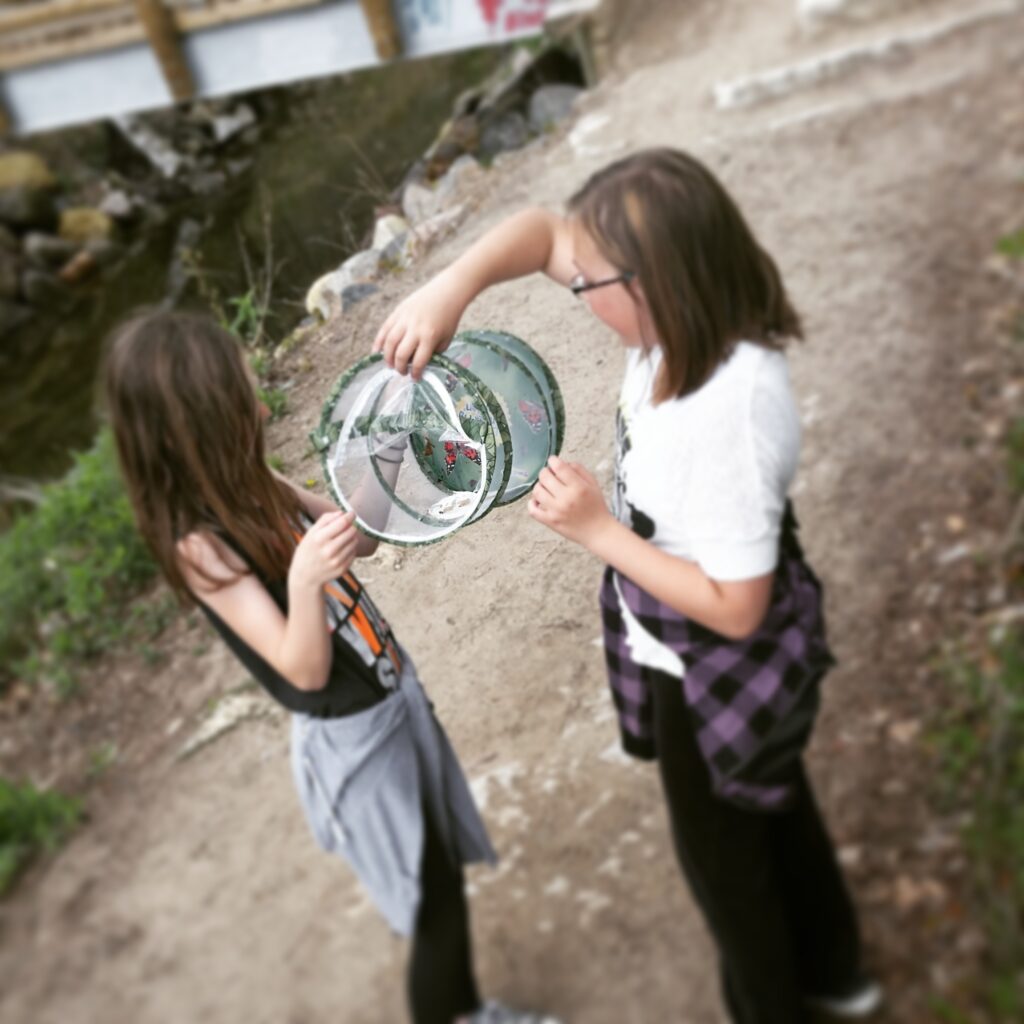
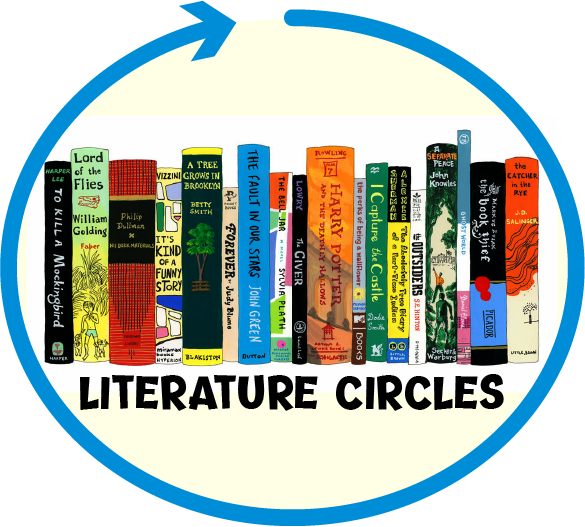
Comments
Comments are closed.